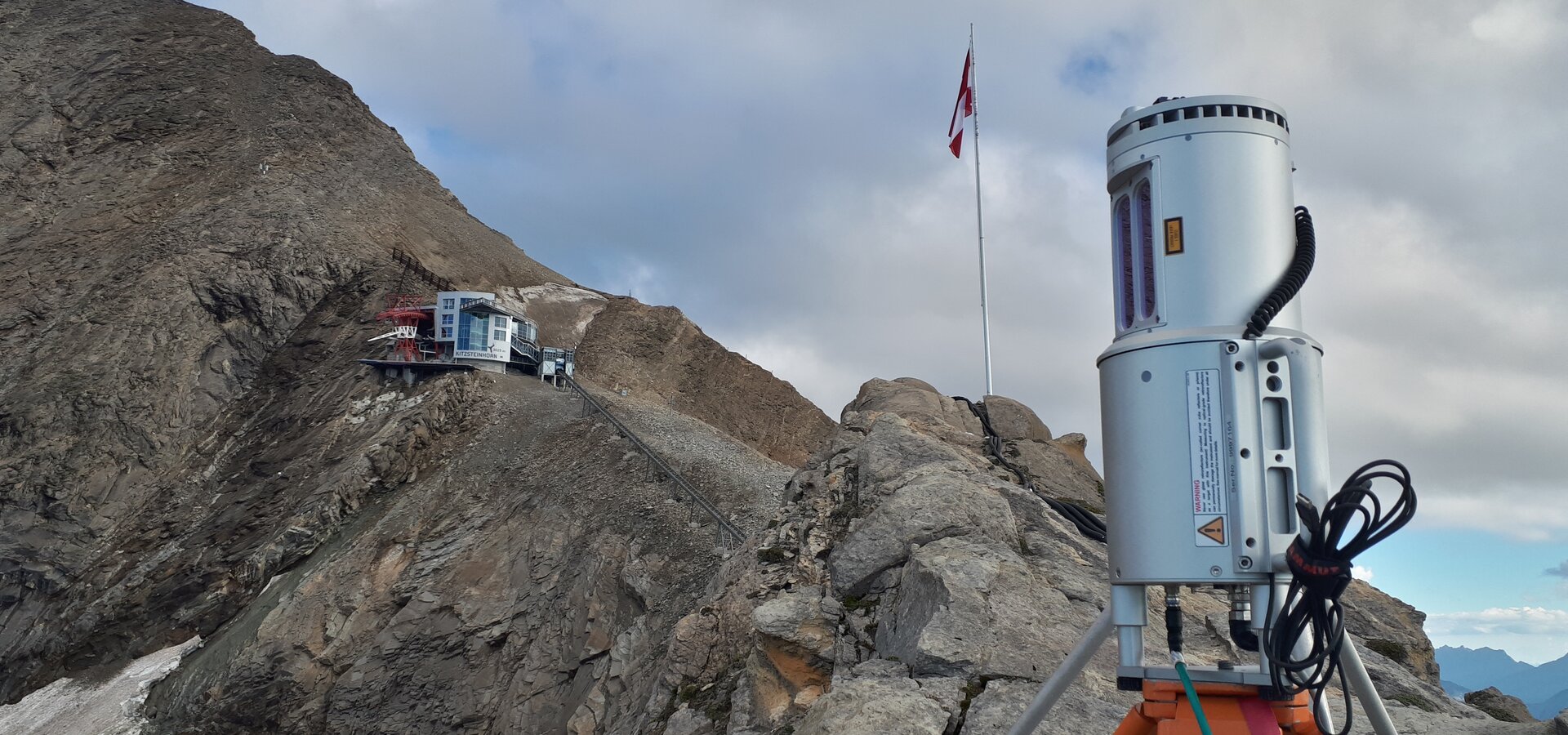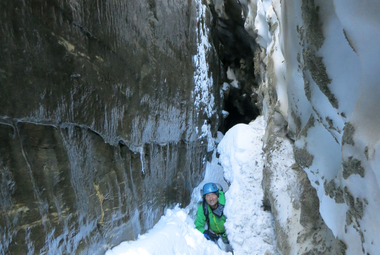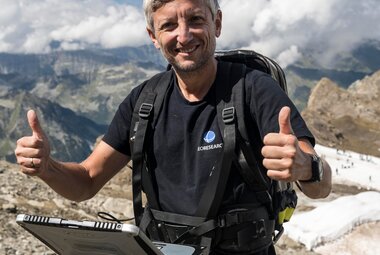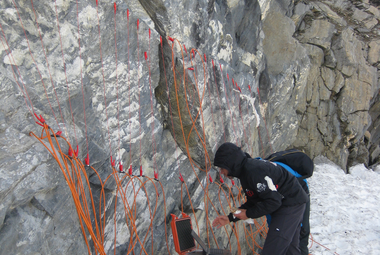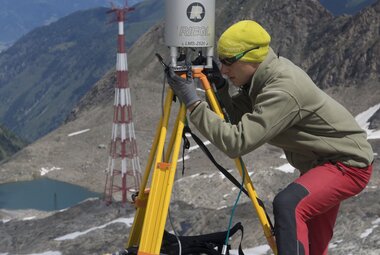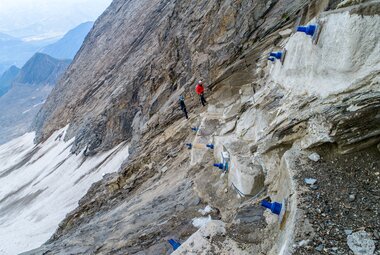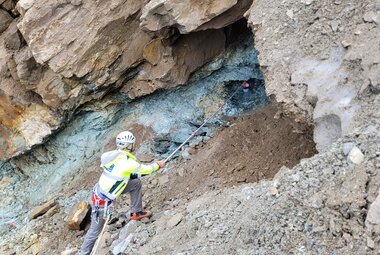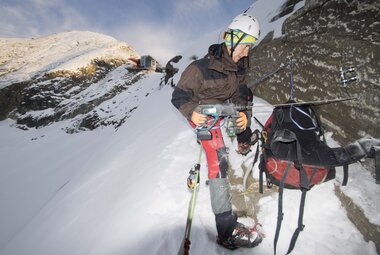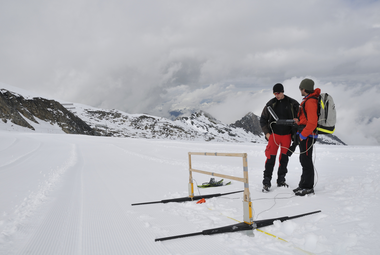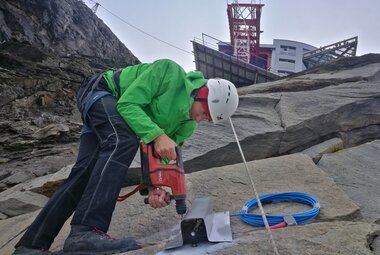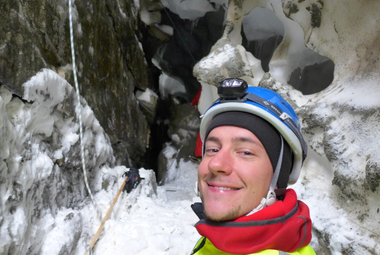A permafrost research project
The unique "Open-Air Lab Kitzsteinhorn" was launched in 2010 and aims to listen carefully to what the mountain has to say, to observe how it changes in order to obtain important data and plan for a safe future.
The Anthropocene Epoch is characterized by humans' impact on nature, and climate change is being considered its most severe consequence, as has become so readily observable in high-alpine areas. The aim of the project "Open-Air Lab Kitzsteinhorn" has therefore ben to investigate alterations in surface and underground structure. The collected data will eventually serve as important decision-making support.
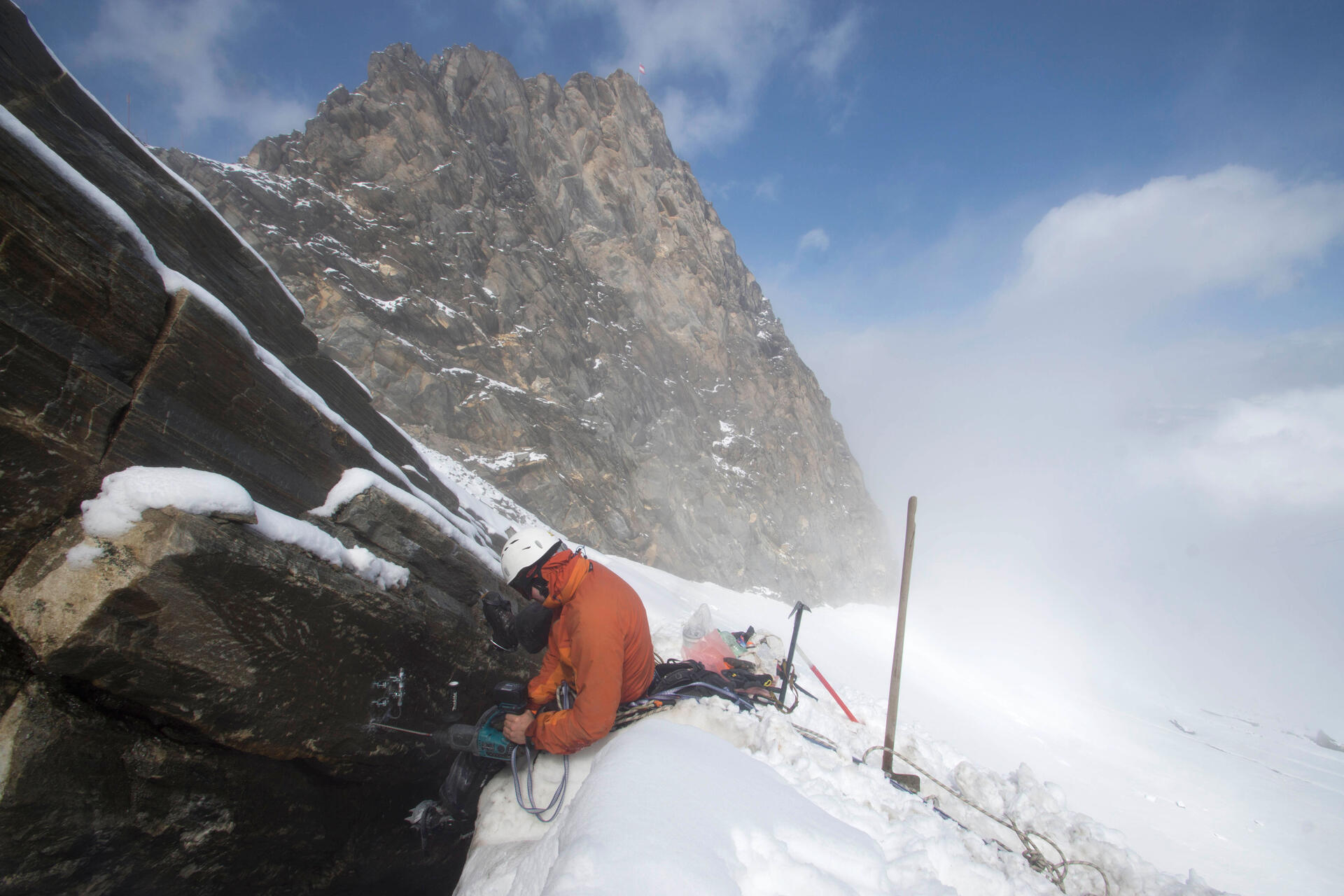
Checking the pulse
The summit of the Kitzsteinhorn is located in the middle of the permafrost region. The mountain's frosty heart has been monitored closely by scientists since 2010. Ingo Hartmeyer and Markus Keuschnig are geomorphologists and together they manage the GEORESEARCH Research Association. With researchers from the Paris Lodron University of Salzburg, the Technical University of Munich and the Max Planck Institute for Chemistry, they head to the permafrost area on a weekly basis in the summer months to check Kitzsteinhorn's pulse with various measuring stations. Both men agree – this open-air lab is unique: "The Kitzsteinhorn is an ideal research location. Its summit stands free like a pyramid and provides perfect conditions for assessing environmental impact. Its three flanks stand for nature protection, energy management and touristic use – for the Hohe Tauern National Park, the Kaprun High Mountain Reservoirs and the Gletscherbahnen Kaprun. To us, that makes the Kitzsteinhorn one of Alps' most multifaceted mountains. The modern infrastructure also facilitates accessing our research areas in the high-alpine terrain."
A fever thermometer inside the mountain
Since 2010, surface and underground structures as well as atmosphere have been analyzed within the framework of a systematic monitoring process. Permanent temperature probes were installed deep inside the mountain like fever thermometers and inform the research team of changes. Ingo Hartmeyer explains: "Permafrost acts like glue in mountains. It holds together gravel like cement. If it starts to melt due to rising temperatures in summer, the ground becomes prone to instability. The Kitzsteinhorn is one of two locations in Austria where thawing of the active layer is monitored." Rock movement is also tracked on the surface with the help of a laser scanner. Markus Keuschnig emphasizes: "The rockfall monitoring that’s conducted here is probably world's most comprehensive one in the high-alpine field. We've seen activity especially in the area of the glacier margins, which have been exposed due to thawing of the Schmiedingerkees glacier. Besides rock slope stability and permafrost, we're also focusing our monitoring on the glacier. We measure ice thickness and surface using GPR and regular drone flights. That makes the Schmiedingerkees glacier one of very few in Austria whose volume can be determined precisely."
Equipped for future challenges
What's also unique in the field of geomorphology is a research project funded by a private company. After the project had ended in 2017, Norbert Karlsboeck knew research would have to continue long-term; therefore, the Gletscherbahnen Kaprun has funded the Open-Air Lab entirely ever since. Karlsboeck explains: "We know high-mountain regions will face huge challenges in the next years. Long-term measurements in our open-air lab provide us with a reliable data basis that allows us to better plan future projects. Right now, we're creating a sort of early warning system with wireless transmission of measuring points to a central hub, which will eventually provide timely alert as soon as movement is detected."
Summertime is a geomorphologist's peak working season, which is why visitors might observe them while rappelling down a rift for taking measurements or drilling deep holes into the mountain wearing a helmet, safety harness and workwear to install thermometers. Sometimes one might watch them flying drones scanning the glacier surface for cavities or observing rock faces with a laser scanner. "As a geomorphologist you definitely have to be sure-footed, for our workplace is oftentimes located off marked trails. But that’s something that runs in a scientist’s blood anyway", the geomorphologists say with a smile. Anytime Ingo Hartmeyer and Markus Keuschnig encounter visitors on their Kitzsteinhorn excursions, they are always happy to give information: "Besides press releases and journal publications this is also part of our educational mission."


